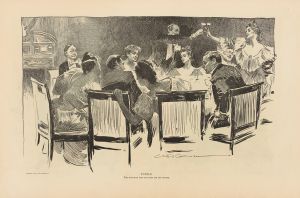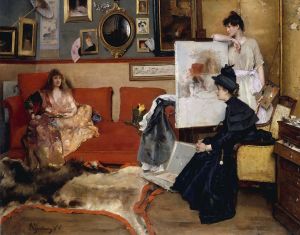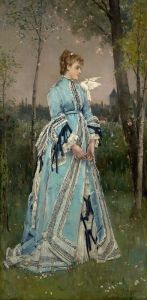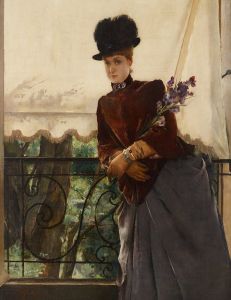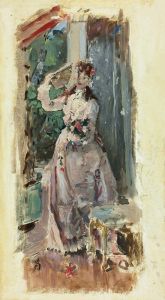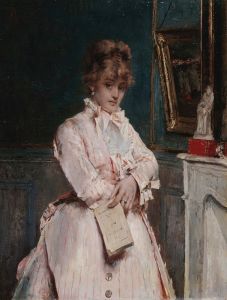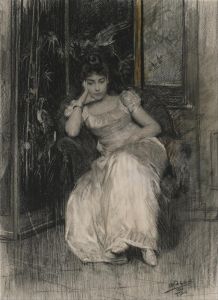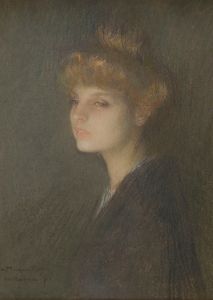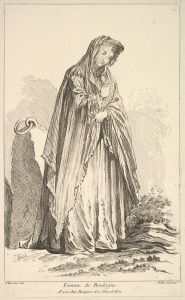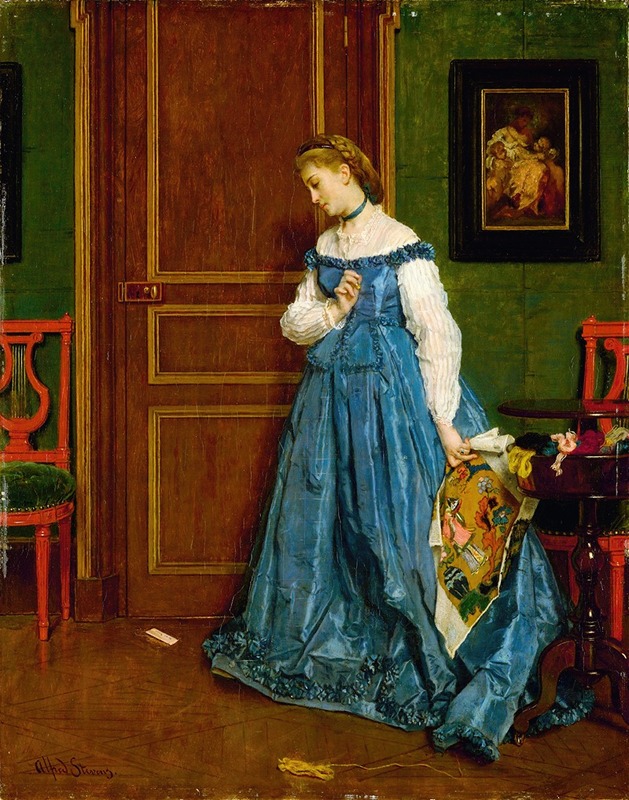
Hesitation
A hand-painted replica of Alfred Stevens’s masterpiece Hesitation, meticulously crafted by professional artists to capture the true essence of the original. Each piece is created with museum-quality canvas and rare mineral pigments, carefully painted by experienced artists with delicate brushstrokes and rich, layered colors to perfectly recreate the texture of the original artwork. Unlike machine-printed reproductions, this hand-painted version brings the painting to life, infused with the artist’s emotions and skill in every stroke. Whether for personal collection or home decoration, it instantly elevates the artistic atmosphere of any space.
Alfred Stevens, a prominent Belgian painter of the 19th century, is renowned for his exquisite portrayal of women and domestic interiors. One of his notable works is "Hesitation," a painting that exemplifies his mastery in capturing the subtleties of human emotion and the elegance of contemporary fashion. Although specific details about the painting "Hesitation" are scarce, Stevens' broader body of work provides context for understanding his artistic approach and thematic interests.
Alfred Stevens was born in Brussels in 1823 and later moved to Paris, where he became an integral part of the art scene. He was particularly influenced by the Realist movement and the works of artists such as Gustave Courbet. Stevens developed a unique style that combined elements of realism with a keen attention to detail, especially in depicting the textures and fabrics of the clothing worn by his subjects. His paintings often feature women in moments of introspection or quiet elegance, set against the backdrop of richly decorated interiors.
"Hesitation," like many of Stevens' works, likely explores themes of femininity and the social roles of women during the 19th century. Stevens had a remarkable ability to convey the inner lives of his subjects, often capturing a moment of pause or contemplation. This focus on the psychological depth of his characters is a hallmark of his work, inviting viewers to ponder the thoughts and emotions of the women he portrayed.
The setting of Stevens' paintings often reflects the opulence and sophistication of the bourgeoisie, with detailed attention given to the furnishings and decor. This not only highlights the social status of his subjects but also serves to enhance the mood and narrative of the scene. In "Hesitation," one might expect to find a similar attention to detail, with the interplay of light and shadow adding to the emotional resonance of the painting.
Stevens' work was well-received during his lifetime, earning him accolades and recognition in both Belgium and France. He exhibited regularly at the Paris Salon and was awarded several honors, including the Legion of Honor in 1863. His paintings were sought after by collectors and continue to be appreciated for their technical skill and emotional depth.
While specific information about "Hesitation" is limited, it can be appreciated within the broader context of Stevens' oeuvre. His ability to capture the nuances of human emotion and the elegance of his era's fashion makes his work timeless. "Hesitation" likely embodies these qualities, offering a glimpse into the world of 19th-century women and the societal expectations they navigated.
In summary, Alfred Stevens' "Hesitation" is a testament to his skill as a painter and his sensitivity to the complexities of his subjects. Although detailed information about this particular painting is not readily available, it remains an important part of Stevens' legacy, reflecting his contribution to the art of his time and his enduring influence on the portrayal of women in art.








